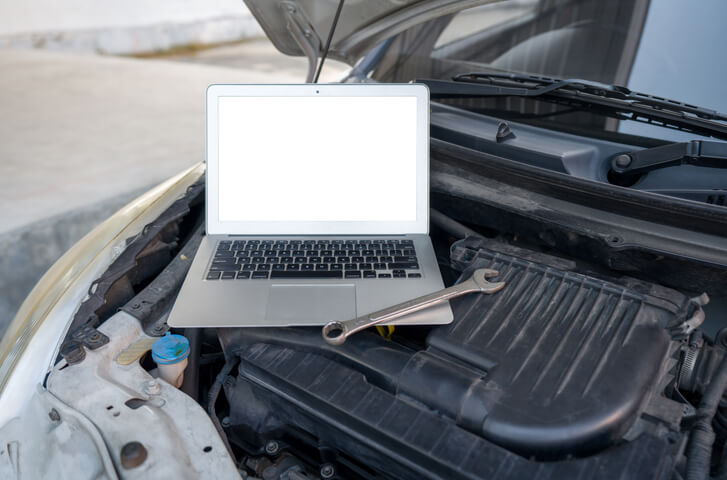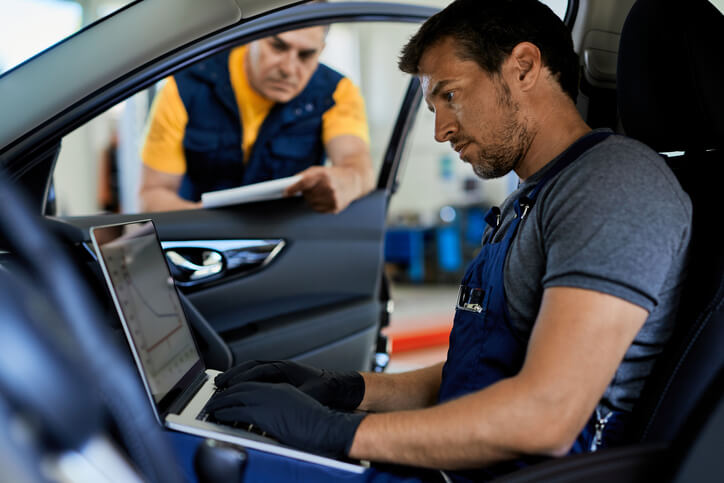For decades in auto mechanic training, routine oil changes have been the gold standard in car maintenance. Miss one, and your engine pays the price. But in today’s tech-driven vehicles, there’s another type of maintenance rising in importance: software updates.
Just like oil keeps your engine running smoothly, software keeps your vehicle’s digital systems performing correctly and securely. And as cars become more connected and complex, knowing how to handle software-related service is fast becoming essential for technicians and auto mechanic training students.
Why Cars Need Software Updates
Modern vehicles are equipped with dozens of electronic control units (ECUs) that govern everything from engine performance to safety features. These systems rely on code, software, to function properly. But just like the apps on your phone, that software needs updates.
Manufacturers issue updates for several reasons:
- Fixing bugs or glitches in vehicle systems
- Improving performance or fuel efficiency
- Enhancing safety features like lane assist or adaptive braking
- Addressing cybersecurity vulnerabilities
- Adding new functionality (especially in EVs and hybrid vehicles)
Some updates are delivered over-the-air (OTA), but many still require a technician to apply them in-shop, using scan tools and proper protocols.

A Shift in What Mechanics Do
It used to be that most car problems were purely mechanical. Now, many issues are digital or a mix of both. That’s why today’s auto mechanic school graduates and professionals must be just as comfortable with software as they are with sockets and screwdrivers.
For example:
- A check engine light might not indicate a faulty part, but a system that needs reprogramming.
- Customers may report odd transmission behavior that gets resolved with a software patch.
- New sensors installed during repairs might not function until calibrated through a software update.
What This Means for Students in Auto Mechanic Training
Students in automotive training today are preparing for a different kind of workshop. While the fundamentals like brakes, engines, and drivetrains remain essential, they’re now joined by digital skills:
- Learning to use diagnostic software and OBD-II tools
- Understanding ECU functions and update procedures
- Interpreting manufacturer service bulletins
- Navigating OTA vs. in-shop updates

At ATC Cambridge, our auto mechanic training programs are built to reflect this shift, giving students real-world exposure to both mechanical and digital systems.
Why Software Updates Are the “New Oil Change”
Both are:
- Essential for long-term vehicle performance
- Often overlooked by owners
- Part of a technician’s regular checklist
- Fast and inexpensive, but critical to preventing bigger problems
It’s a mindset shift: just as drivers used to be told “change your oil every 5,000 km,” technicians now need to educate them to check for software updates regularly, especially when they visit the shop.
Launch Your Career At ATC Cambridge
The modern auto mechanic school doesn’t just teach wrenches and wires. It teaches you to speak the language of software, sensors, and systems. And that’s exactly what today’s employers are looking for.
By mastering both mechanical repair and digital diagnostics, you’ll be ready to succeed in a garage that’s no longer just about horsepower, but processing power, too. With hands-on experience in both diagnostics and repair, ATC Cambridge gives you the edge in today’s high-tech automotive industry.
Explore how our automotive training prepares students to thrive in the connected vehicles of today and tomorrow.
Contact ATC Cambridge now!


